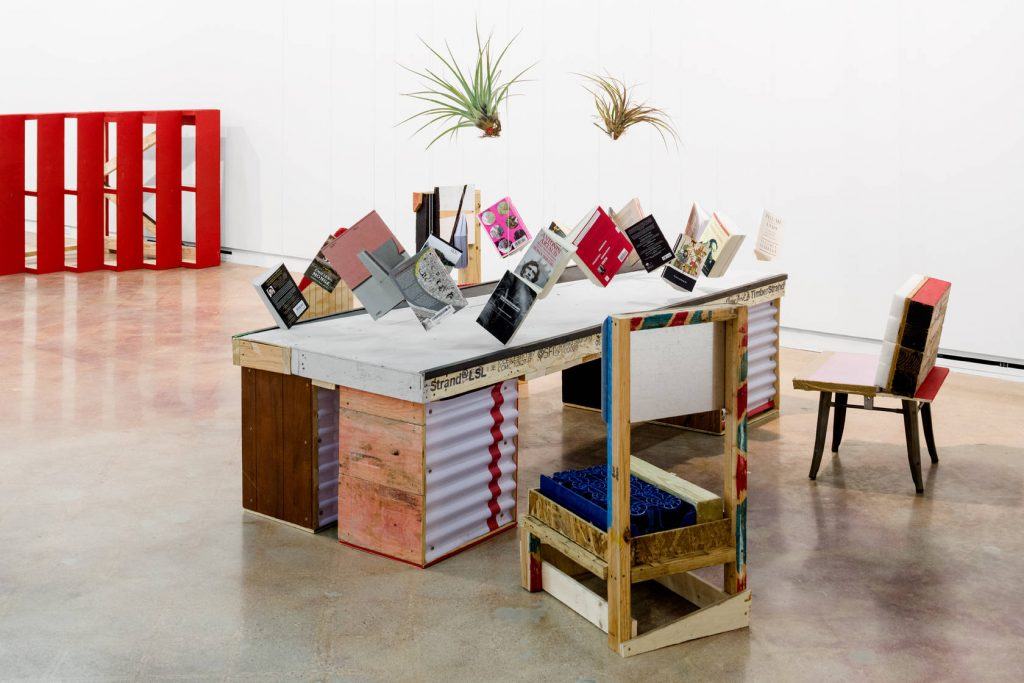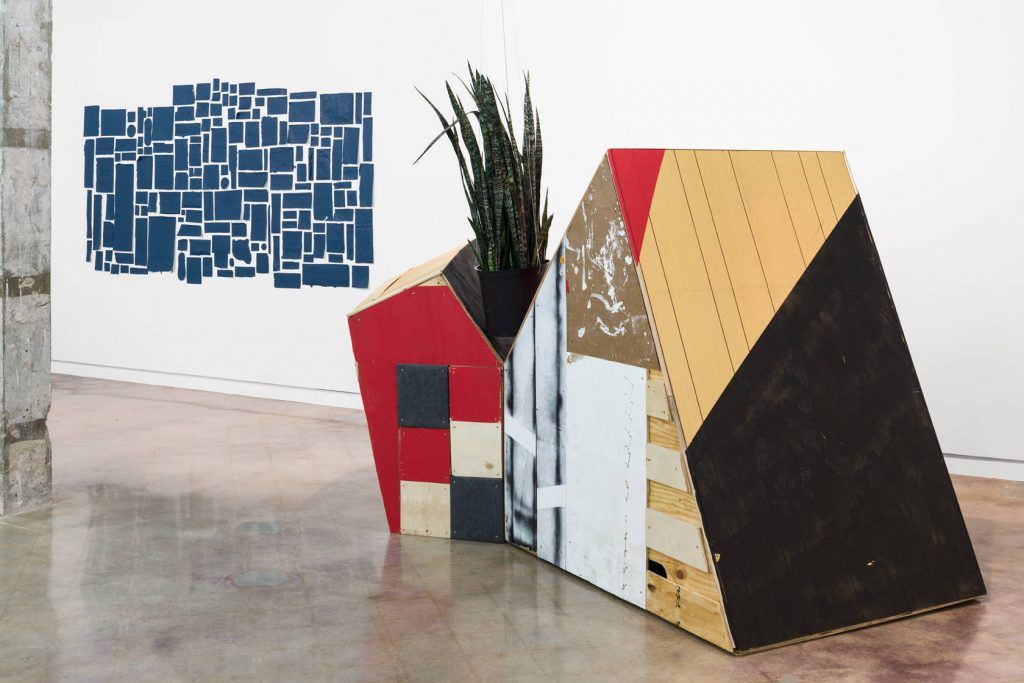Artist Abraham Cruzvillegas’s practice is rooted in the concept of autoconstrucción—or “self-construction,” an idea grounded in notions of transformation, dialogue, and play. During his current exhibition at The Contemporary Austin, Hi, how are you, Gonzo?, a show co-organized by Aspen Art Museum CEO and director Heidi Zuckerman, Cruzvillegas creates sculpture from found objects and then engages visitors as participants in the transformation of the work. In connection with that show, Zuckerman interviewed Cruzvillegas. Here is an excerpt of that conversation.
Heidi Zuckerman: Do you think truth is important in art?
Abraham Cruzvillegas: Truth is what historians produce, and I always feel very skeptical about it. I’m not a religious person. I believe in friendship, and I believe in snacks…
I do believe in being transparent. I really like when people question what’s behind an artwork—they’re trying to find out what is hidden. Art should be transparent. I like asking the questions sincerely, and not trying to hide behind my art or my questions. When you publish a book, you are making your questions public. When you make an exhibition, you are exhibiting yourself. For me, this doesn’t mean truth, only questions. Questions are only true in their state of existing.

Zuckerman: I like that you are talking about what you believe in. That’s one of the things that I’m really drawn to in art, too. I asked you the question about truth because it’s a question about where we can find it, whether it even exists, and, if it does, whether it exists as a commonality between more than just one person.
So many people need so much from art. Sometimes art is burdened by all the things that people need from it. I wonder what you think about that and what you think art can do?
Cruzvillegas: It’s a very hard question. When I’m asked whether I’m an ecologist, I disagree; I’m not. I’m not an activist. I just make art that takes questions or problems related to self-destruction and use them as the prime matter. We need to have free will as artists, as citizens, as political entities, then we can construct good questions and share them. This is art.
We all need answers and statements that lead us toward something that we think is good, but it’s very hard, and I don’t think we have the answers. I’d prefer to get nervous and produce more situations that I can share with friends. For instance, my friends, the musicians, teach me a lot about a totally different type of art making that is not as arrogant or selfish as the visual arts. In terms of making questions, the way they work in conviviality, in the middle of a catastrophe, is far more seductive and appealing. They still produce something beautiful that is an abstraction of these problems.

Zuckerman: Are you comfortable with things being messy?
Cruzvillegas: I’m super messy. I like saying that in order to create, sometimes we have to destroy. Destruction, as a tool, is important from an educational standpoint. When I think about my values and how I’ve arrived at being myself, it has meant destroying some of the values that my family gave me. I had to emancipate myself from that situation.
Now, I hope my children will emancipate themselves from me to produce their own identities. This mess that carries chaos and destruction is necessary sometimes, but it’s impossible to have it as a permanent circumstance. There are cycles and periods of energy that flow in different ways. Sometimes, it’s absolutely necessary to destroy myself.
Zuckerman: Thinking about the connection between fear and power, what role do you think art can play in that?
Cruzvillegas: There is this film by Rainer Werner Fassbinder about that, and how fear is the most powerful energy in the world. It’s not love. It’s not money. It’s not sex. It’s fear. Fighting fear is the most important thing. Of course, I’m a fearful person, but I try to fight my fears by producing these questions. First of all, who am I, why, and what for? Is it worth being myself? I try to challenge my fears.
Zuckerman: For the last eighteen months or so, I’ve made it a personal practice to try and do one thing every day that I’m totally afraid of. It’s hard.
Cruzvillegas: Totally!
Zuckerman: I’ll end by saying that the complexity of your practice and the way you use things that you’re given in unexpected ways is especially interesting. It’s a great metaphor for life, where we use what we’re given, however we need to, to make known whatever we want to share. Thank you for sharing your practice with us.
Cruzvillegas: I’m very grateful. Thank you.


